Colorado Clean Heat Plan
Black Hills Energy’s Colorado Clean Heat Plan Offers Cost-Effective Approach to State’s Mandate
In December 2023, Black Hills Energy filed its first Clean Heat Plan with three distinct plan options in response to the Colorado Legislature’s objective to decrease greenhouse gas emissions by mandating the reduction of natural gas delivery and usage.
Senate Bill 21-264 was passed by the Colorado General Assembly in 2021 and is known as “Clean Heat.” The law requires natural gas distribution companies like Black Hills Energy to develop plans that significantly reduce the greenhouse gas emissions from natural gas used in homes and businesses.
According to state law, natural gas utility companies are required to submit Clean Heat Plans to the Colorado Public Utilities Commission (PUC) that model scenarios for achieving emission reduction targets of 4% by 2025 and 22% by 2030, based on a 2015 baseline.
The 2015 baseline doesn’t account for significant customer growth in natural gas usage driven by Colorado’s population boom,* customer desire for natural gas, and colder weather over the past eight years, especially in the mountain communities and areas of the front range served by Black Hills Energy. With this in mind, the seemingly modest Clean Heat emission reduction targets are, in reality, aggressive mandates, as emissions must be brought below 2015 levels. This increases Black Hills Energy’s actual targets to a 25% emission reduction by 2025 and 43% reduction by 2030.
*Between 2010 and 2022, the population of Colorado grew nearly 15%. U.S. Census Bureau QuickFacts: Colorado.
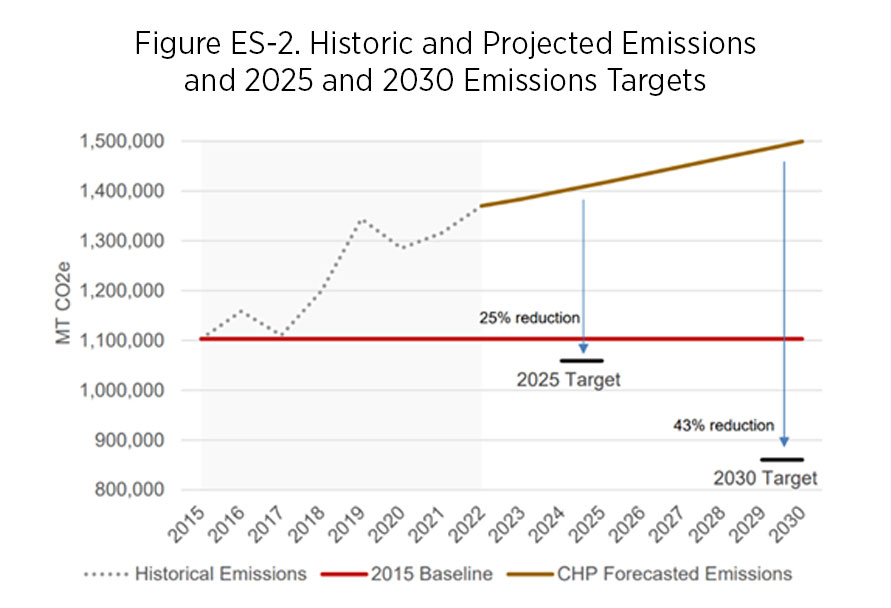
This graph illustrates why the 2015 baseline amplifies already aggressive targets and makes achieving them unrealistic.
Due to growth and increased natural gas deliveries by Black Hills Energy Colorado Gas since 2015, the 4% and 22% reductions are a calculated 25% reduction by 2025 and 43% reduction by 2030, substantially increasing the already aggressive emission reduction targets.
Our preferred Clean Heat Plan balances achievement of the state’s goals and impacts to our customers, while demonstrating that natural gas emissions can be responsibly reduced in Colorado. The plan also compliments our intent to make our gas distribution system net-zero by 2035.
We share a vision for a cleaner, sustainable future that builds upon our responsibility to deliver safe, reliable and cost-effective energy, as detailed in our 2022 Sustainability Report.
The Plan Options
The Clean Heat law requires Black Hills Energy and other utilities in Colorado to include the following scenarios in their Clean Heat Plan:
- A scenario that achieves the Legislature’s greenhouse gas emission reduction targets outlined above — i.e. 4% by 2025 and 22% by 2030 — regardless of cost.
- A scenario that must not cost more to implement than the equivalent of 2.5% of the company’s annual retail sales.
- Any other scenario the company believes to be relevant to the target goals.
After in-depth analysis of the targets and the amount our company and our customers would have to pay to implement those ambitious targets, we soon realized that based on the current Clean Heat rules, no one scenario could achieve the targets and remain within the cost cap.
That’s why we filed three scenarios — one that prioritizes the cost cap, a second that achieves the targets regardless of costs, and a third option that maximizes resources for meaningful emission reductions in a cost-effective manner.
Plan Option 1 — Emission Target Achievement Plan
This option was modeled to show achievement of the 2030 emissions reduction target; however, it far exceeds the 2.5% annual retail sales revenue spending cap. Given the approximate cost of $2.4 billion through 2030, Black Hills Energy has not recommended this scenario. As modeled, Black Hills Energy residential customers would see their natural gas bills increase from between $123.99 and $214.88 per month, depending on the rate area. That’s based on an average yearly implementation cost of $397 million, which exceeds the current 2.5% price cap by 67 times.
The 100% reduction target would be achieved utilizing the adoption of high levels of energy efficiency measures, large quantities of renewable natural gas (RNG) — which is essentially methane harvested from landfills and other industrial facilities — plus hydrogen blending, and investments in advanced monitoring and leak detection.
Plan Option 2 — Clean Heat Preferred Plan
This is our preferred plan because it is the most affordable option for our customers and remains within the implementation cost guidelines — around 2.5% of annual retail sales or about $5.9 million. If the Colorado PUC adopts this option, it would result in an increase of between $1.85 and $3.21 per month for Black Hills Energy residential customers, depending on the rate area.
The Preferred Plan scenario — which starts at about $5.9 million per year — complies with Clean Heat rules and utilizes a diverse portfolio of resources, including energy efficiency measures, RNG, advanced monitoring and detection and green hydrogen blending in 2030.
The plan achieves 11% of the state’s 2030 Clean Heat greenhouse gas emission targets, and 28% of the targets if growth since 2015 were not counted against progress toward achieving reductions.
Plan Option 3 — Cost-Effective Policy Alignment Plan
With a solid jump in greenhouse gas emission reductions at just a fraction more cost than our preferred plan, this scenario achieves what we think is a good compromise between the two plan options above. In fact, this would be Black Hills Energy’s preferred plan if the recovered methane credit accounting and sourcing of RNG were allowed under Colorado Clean Heat rules.
If the PUC adjusted its Clean Heat treatment of RNG to align with other established state and federal programs and allow for credit banking, this plan would cost our residential customers in Colorado between $2.07 and $3.59 more per month on their natural gas bills. That’s the equivalent of 2.8% of our annual retail sales and only marginally above the 2.5% annual cost cap.
The greenhouse gas reductions, however, jump from 11% of the state’s targets in the Preferred Plan above to 38% in this Cost-Effective Plan. If we exclude growth since 2015 from the equation, this plan achieves 100% of the state’s 2030 reduction targets.
This scenario includes many of the same details as the preferred plan above, but also removes the limit on allowable recovered methane and utilizes credit banking, lifecycle emission accounting and out-of-state RNG when in-state, cost-effective RNG is limited in availability.
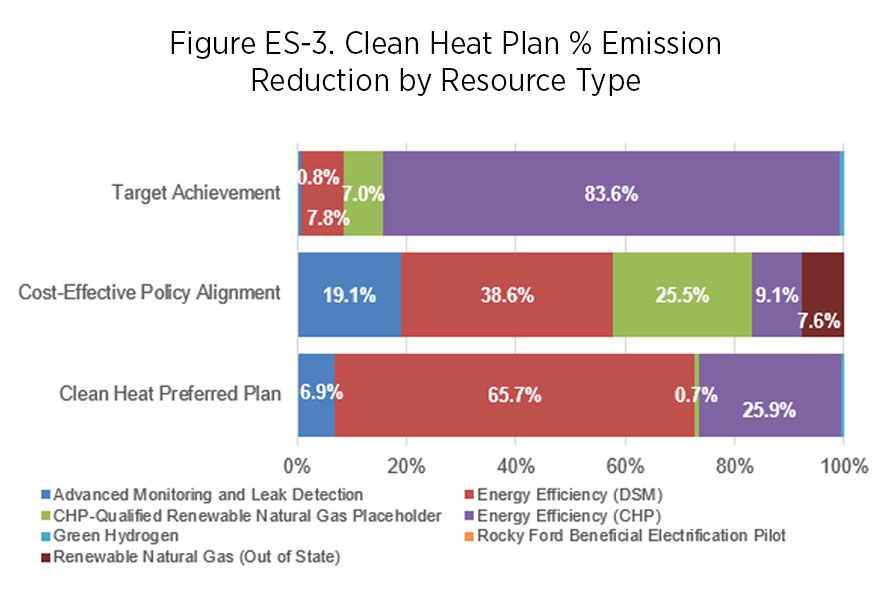

This graphic starkly illustrates the massive costs associated with the state targets.
Conclusion
At Black Hills Energy, we keep our customers at the top of our minds when faced with government mandates that could affect the choice of energy they’re allowed for cooking and staying warm and how much they must pay to meet their basic needs.
That’s why we believe it’s important to emphasize the tremendous cost of reaching 100% of the state’s 2030 greenhouse gas emission reduction goals. Black Hills Energy’s customers are predominantly located in rural areas, and we don’t want to see them left behind in the clean energy transition.
Frequently asked questions
1. Why is Black Hills Energy filing this Clean Heat Plan?
The Colorado Legislature passed a law in 2021 requiring utility companies – often referred to as “local distribution companies” – to file plans to meet the ambitious greenhouse gas emission reduction targets outlined in the law.
2. What are the impacts to the average residential natural gas bill?
Plan Option 1 — Emission Target Achievement Plan

Plan Option 2 — Clean Heat Preferred Plan
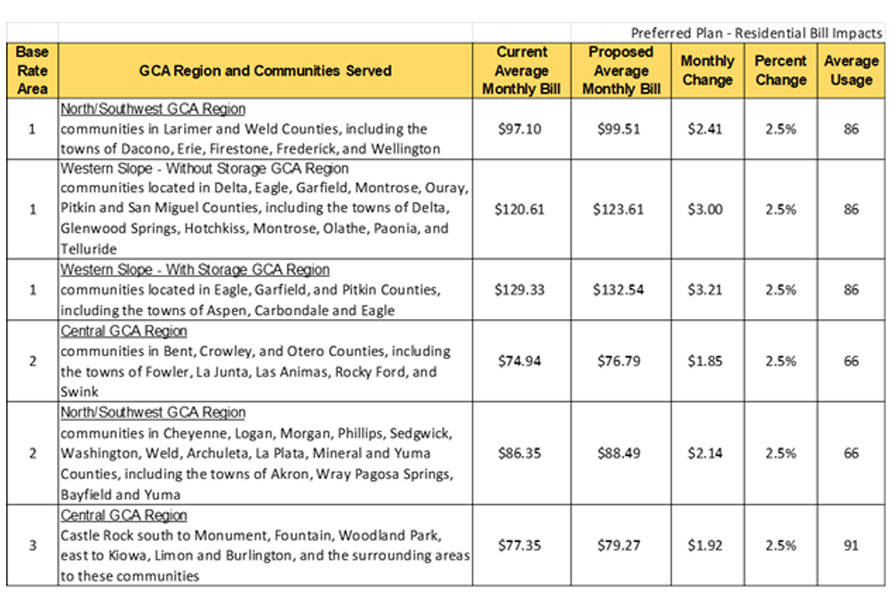
Plan Option 3 — Cost-Effective Policy Alignment Plan
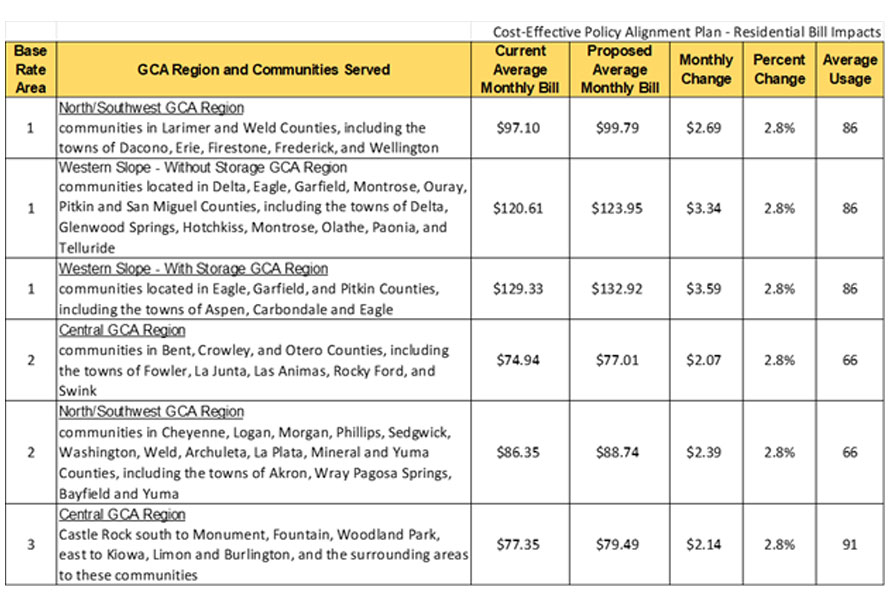
3. What are the costs to implement each plan?
Plan Option 1 — Emission Target Achievement Plan: Implementation costs

Plan Option 2 — Clean Heat Preferred Plan: Implementation costs
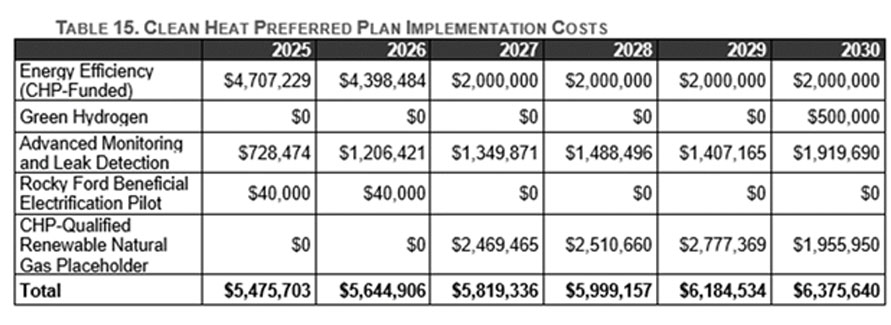
Plan Option 3 — Cost-Effective Policy Alignment Plan: Implementation costs
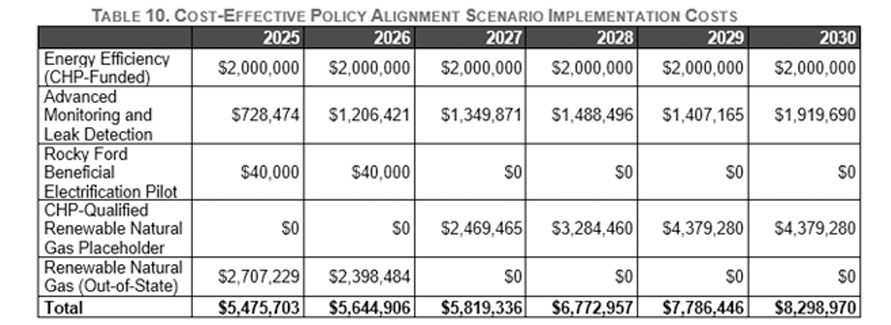
4. What are the greenhouse gas emission savings for each plan?
Plan Option 1 — Emission Target Achievement Plan: Emissions reductions
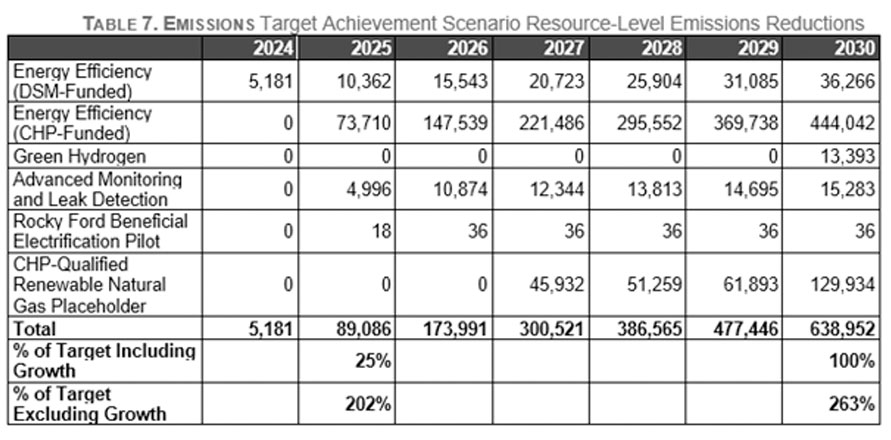
Plan Option 2 — Clean Heat Preferred Plan: Emissions reductions
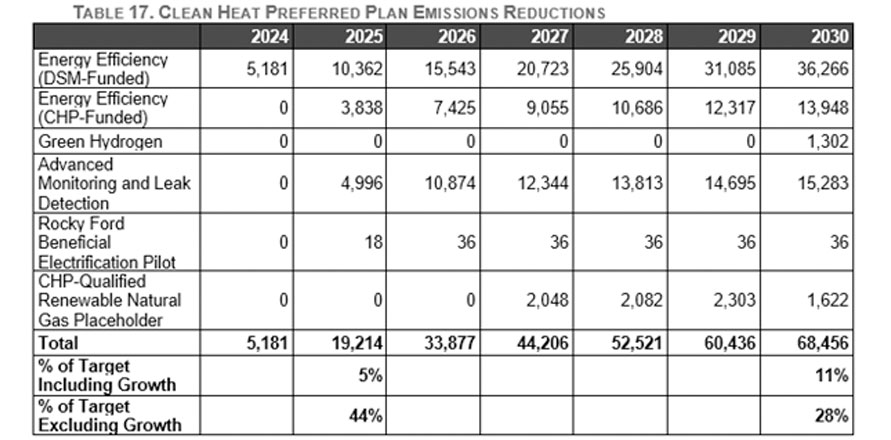
Plan Option 3 — Cost-Effective Policy Alignment Plan: Emissions reductions
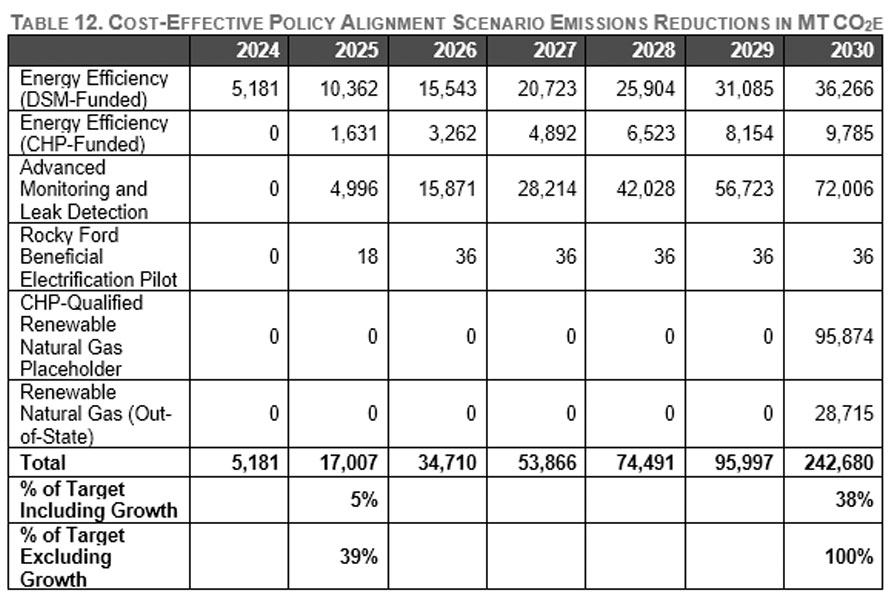
5. Why is growth since 2015 a consideration when evaluating the magnitude of the emission reduction targets?
Because it means we must go back eight years in time and rely on an outdated view of the size of our company. Black Hills Energy had fewer customers and distributed a significantly smaller amount of natural gas back then, so the emissions reduction targets set by the Clean Heat law are not the actual numbers we must achieve.
Using those current customer numbers and loads, the 4% emissions reduction target by 2025 is, in reality, a 25% reduction target, and the 22% reduction by 2030 target is actually a 43% reduction mandate.
The reality surrounding customer and usage growth is that it continues to increase the overall amount of natural gas required to calculate emission reduction rates. If growth is removed from the equation, the target can be achieved on a more cost-effective basis rather than having the state of Colorado’s growth count against the company’s reduction progress.
6. We noticed that “beneficial electrification” is not a large part of your plan. Why is that?
While Black Hills Energy is both a natural gas and an electric company, our overlapping natural gas and electric territories are limited in the state of Colorado. Unlike a larger utility that might offer both natural gas and electricity to customers and, thus, be required to offer programs that convert one to the other. Black Hills Energy is not positioned to offer such programs in Colorado.
Additionally, as the Clean Heat plan modeling shows, the costs of electrification are higher than those associated with other resources utilized in our plans, including natural gas energy efficiency measures and advanced monitoring and leak detection.
7. Where can I find more details about your Clean Heat Plans?
Read our complete 2024-2028 Colorado Gas Clean Heat Plan.